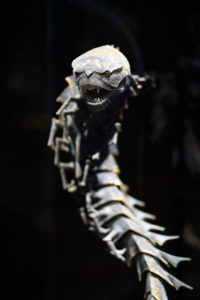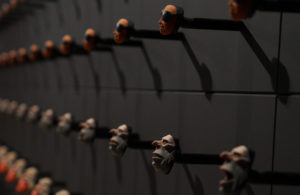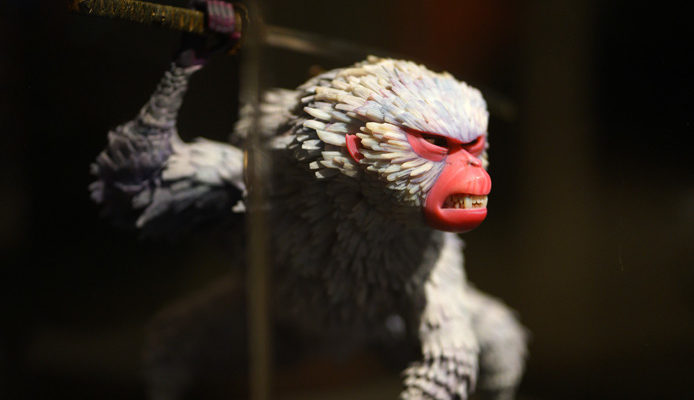New faces in animation; Stop-motion meets 3D Printing
LAIKA, the award-winning, stop-motion animation creator has made it known that the thousands of faces used in each of their films have been created by 3D printing. LAIKA has animated films such as “ParaNorman”, “Coraline”, “Kubo & the Two Strings” and “The Boxtrolls” and has consistently used 3D printing for animation in order to accomplish the naturalistic facial animation that is needed for its stop-motion puppets. The use of 3D printing technology gives these characters a distinct look and feel that is unique to LAIKA’s animation.
“The idea was to harness the power of the computer and these emerging 3D printing technologies to try to push facial performance, or push a character’s performance into a whole new realm,” said Brian McLean, director of rapid prototype at LAIKA.
For over 10 years, additive manufacturing technology, also known as 3D printing has been consistently used at LAIKA. As time goes on, LAIKA continues to thrive towards increasing ambitions artistic visions and continues to move forward with the ever-evolving rapid advancements in 3D printing and software.
“It’s really kind of an insane process that we’re doing, where we’re taking 3D printing and we’re fusing it with this really old technique of stop-motion and replacement animation and forcing these two technologies and techniques together to come up with some amazing performances and amazing results,” said McLean “There’s lots of experimentation before we arrive at the look of characters and the feel of the movie.”

LAIKA also excels at producing complex stories with each of their films and “in order to tell a really complex story you want to be able to see and go along with that character’s emotional journey,” said McLean. “The quality of the 3D printing and the efficiency with which we’re printing these faces reached a point where each subsequent director wanted to have something more customized.” Creative Driving Technology “The decision to push the technology is very much driven by creative,” said McLean. Proceeding the great success of “Coraline,” LAIKA saw both powerful advantages of 3D printing as well as its current limitations- mainly, having to hand paint each individual face. “I still remember being in meetings with the director of “Coraline” and negotiating the number of freckles that “Coraline” had on each side of her face because we knew a painter had to hand paint each one of those freckles.”
In the midst of the early planning for LAIKA’s fourth film, “Kubo and the Two Strings,” creators came to realize that the three character designs that were currently being considered would not be possible with the 3D printing technology that the Studio was currently using. “So I called Stratasys,” McLean said, “and while it took a bit of convincing because it was still early stages,” the team collaborated on Beta testing of Stratasys’ first color 3D printer, the Objet Connex3™.
“That was a really powerful alliance that suddenly allowed us to break into this color plastic printing world. We had a hunch this Connex3 was just the beginning of their road map. And we were right.”
As LAIKA was working on “Kubo and the Two Strings,” one of the things they were very excited about “is that we embarked on something truly unique. For the first time, we were taking hardware from a company and co-developing software. And customizing the software for our needs. Working with Jon Hiller, an independent software developer, and Stratasys we were able to unlock the Connex3 hidden Voxel Print capabilities,” said McLean. “By doing so we were able to create sophisticated and unparalleled color plastic 3D printed faces for Monkey, Beetle and Moon Beast.”

Together, LAIKA and Stratasys took the next step in their partnership when LAIKA was invited to be a Beta customer on the Stratasys J750™, the first multi-material, and full-color 3D printer. Because of LAIKA’s strong relationship with Stratasys, they together created a special partnership with Fraunhofer, the creators of Cuttlefish software, thereby providing LAIKA with early access to Voxel Print on the Stratasys J750. The J750 is a groundbreaking 3D printer, that offers over 360,000 different color combinations; together with Voxel Print, the J750’s capabilities are almost endless as it is combined with the capabilities to compose new gradients and textures, thereby allowing for 3D printing with extraordinary precision.“This is what we’re using on ‘Film Five,’” said McLean. “Basically we have a workflow now that allows us to have an animator sit down, animate a unique line of dialogue, specifically for that one-shot in the movie and we’re able to print that out, process it and deliver it to set.”
LAIKA continues to strive towards creating unparalleled stop-motion animated performances. This pursuit has and continues to lead them to push the limits of the 3D printing technology that they use. They are continuing to increase the number of faces that they use, “Coraline” had approximately 20,000 faces, “ParaNorman” had 40,000, “The Boxtrolls” had 56,000, “Kubo” had 64,000, and “we’re well on the way to producing between 85-90,000 faces for our next movie,” said McLean.
“The only reason we do what we do is for the performance,” said McLean. “It all goes into that idea of us being able to tell stories that have never been able to be told in stop-motion animation.” According to McLean, “Being able to have a 3D printer like the Stratasys J750 that’s repeatable and accurate with this full range of color and materials has afforded us the idea of being able to achieve this shot-by-shot customized animation.”
Over the past decade, LAIKA’s relationship with Stratasys “has been reinforced in film after film. There’s this level of trust that allows us to continue to push each other in really positive ways and I’m excited to continue to forge this relationship on our next movie and in movies to come,” said McLean.
